|
Published on Archi.ru (https://archi.ru) |
||||||||
| 09.02.2022 | ||||||||
|
Creative Experiments |
||||||||
|
Alyona Kuznetsova |
||||||||
| Studio: | ||||||||
| Arena | ||||||||
|
In this issue, we feature five projects by ARENA project institute prepared for international competitions: from an opera house and library to a heritage site and artificial island. In Russia, ARENA project institute does mostly large-scale projects: its portfolio includes dozens of sport facilities, corporate headquarters, and grand-scale complexes of various functions – from shopping malls to museums. Nevertheless, the institute regularly takes part in international competitions, including concept and “paper” ones. According to the company leaders, this experience “activates and mobilizes creativity”, which, of course, makes a positive difference for all operation processes. ***
|
||||||||
Castle-Resort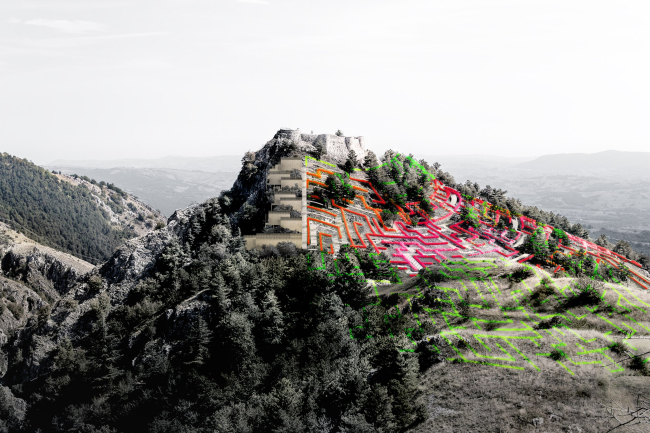
Italy’s Roññamondolfi is a picturesque little town standing on a mountain slope with sweeping views and ruins of a medieval castle. The competition for the project of a hotel complex was organized with a view to attract more tourists in this area.
The organizers wanted the contestants not just to propose their versions of housing that would fit in with the surroundings but also provided ample opportunities for studying the history of this area and its nature- the town is surrounded by pastures, pine forests, rocks and waterfalls, through which numerous trails pass. The height of the new buildings was not to exceed 5 meters; cutting down trees was not allowed. In its concept, ARENA project institute turns the ascent to the fortress into navigating a flower labyrinth. Its walls are formed by local perennial plants that will change the color of the slope depending on the season. The structure of the labyrinth reminds of a medieval town, in which you can also easily get lost. At the edges of the garden, the architects propose to install laconic wooden “cabins” with panoramic windows commanding the mountain and valley views, and sunbathing roofs. Also, according to the concept, Roññamondolfi will get a platform for various events – historical reconstruction or scientific conferences, a cafe, and an expo pavilion. 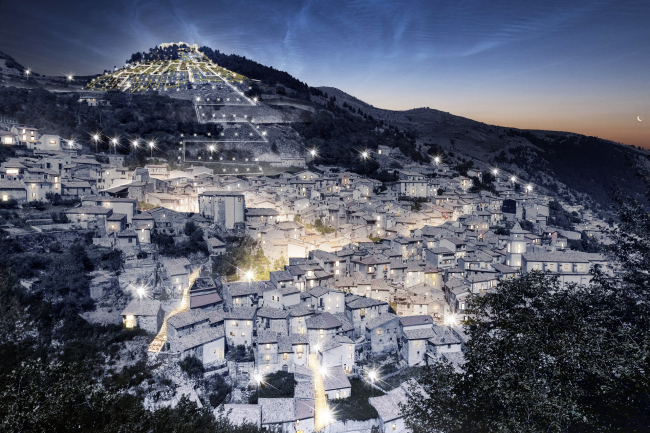
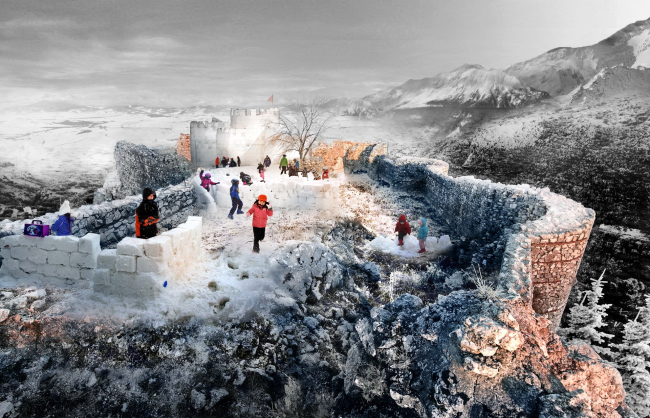
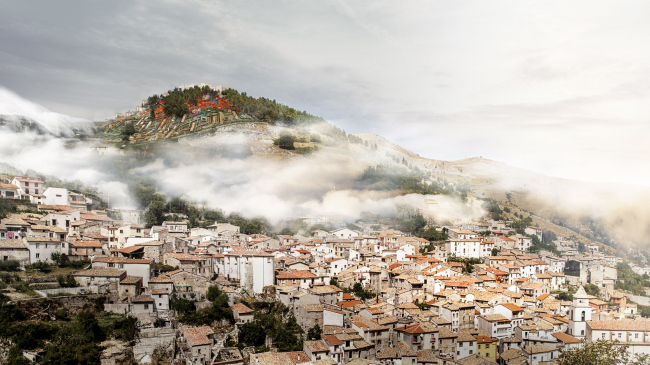
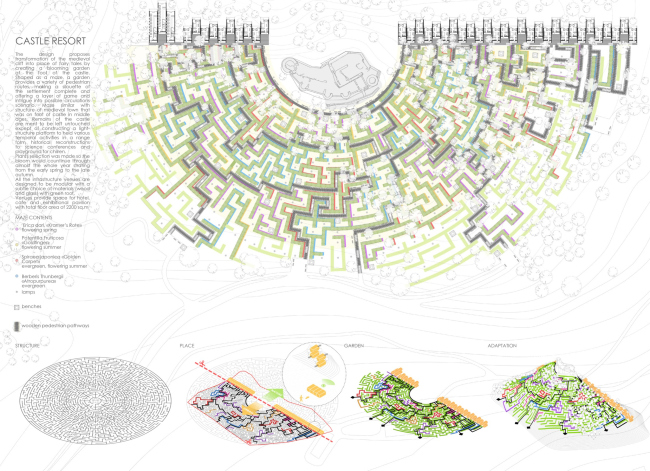

|
||||||||
Nodeul Dream Island
Nodeul is an artificial island on the Hangang River in the central part of Seoul. At one point, this place hosted tennis courts, then there were plans for building an opera house here, but eventually it was decided to turn this island into a more democratic venue for summer open air festivals complemented by a park.
The ARENA architects proposed a multilevel structure, in which intertwined spaces smoothly merge into one another: the ramps from the bridge lead to hanging promenades, wavy bicycle and pedestrian trails descend to the waterfront and observation decks, and the amphitheater of a parametric shape is inseparable from the river and park views. The entire island is perceived as one large art object, each fragment of which offers new impressions to the visitors. Even utilitarian elements – the road tarmac, for example – looks like a dance floor; on the “backside” of the bridge, there is a lighting installation; its concrete supports are covered by a pattern from a book of optical illusions. The layers are read not only in structure but in meanings as well: the renders demonstrate both the “vibe” of a Soviet square with a monument in its center, the Utopia Island, and a K-Pop stage. 

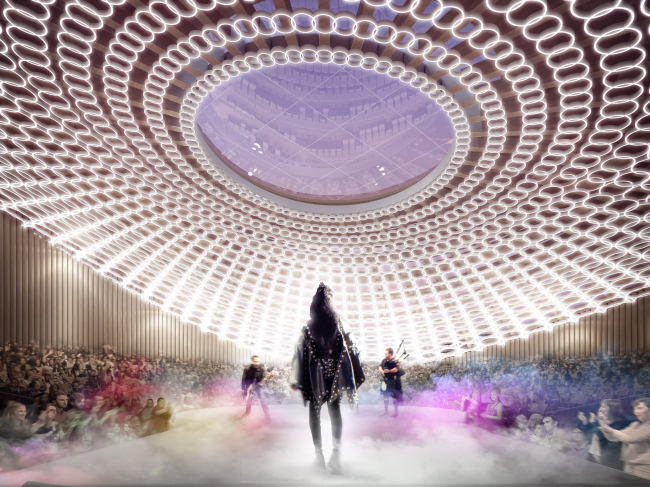


|
||||||||
The visitor center of the Kemeri national park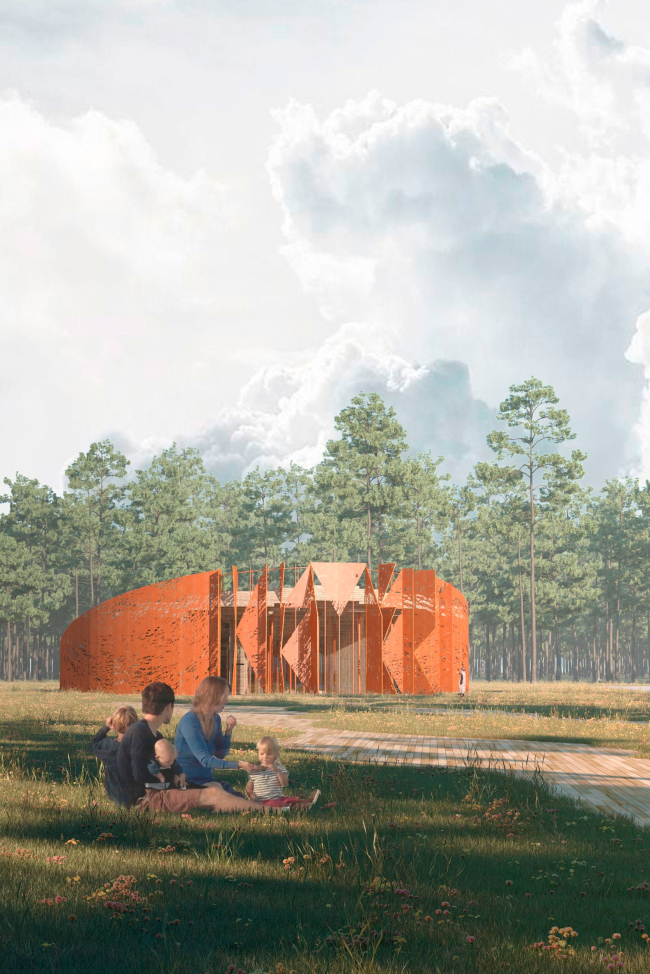
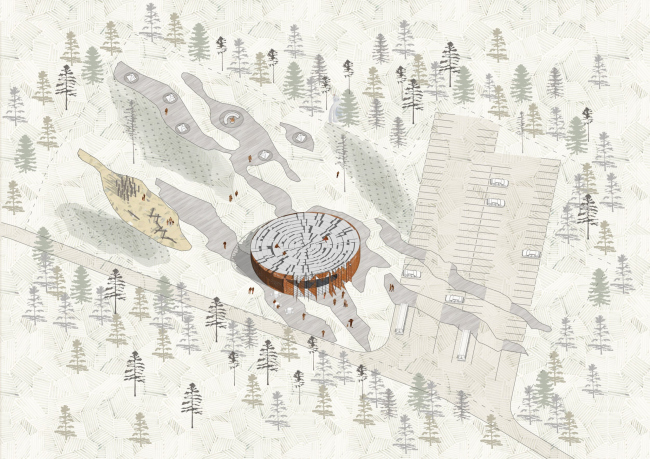
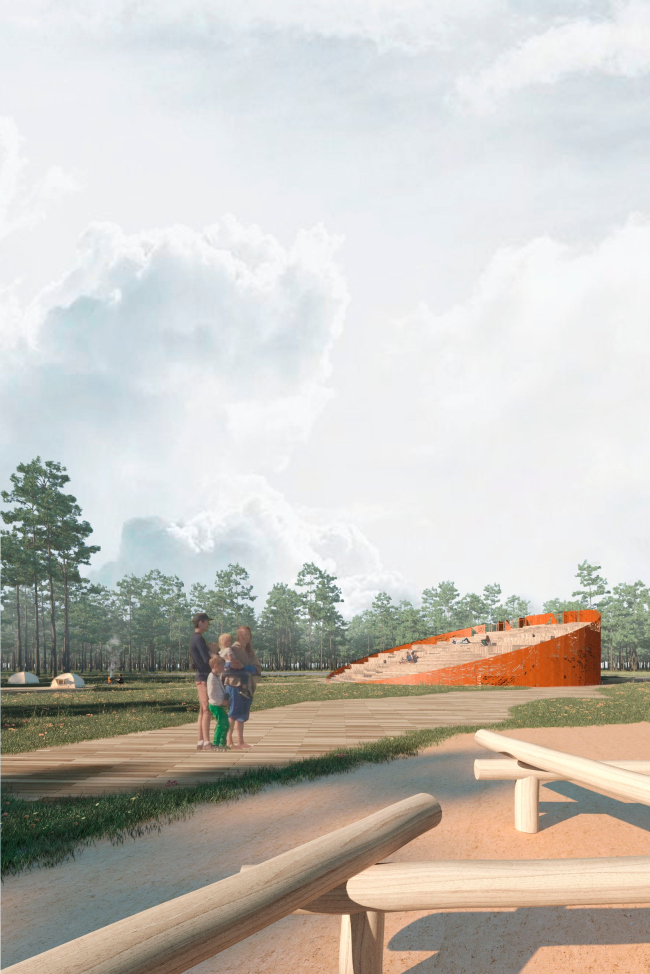
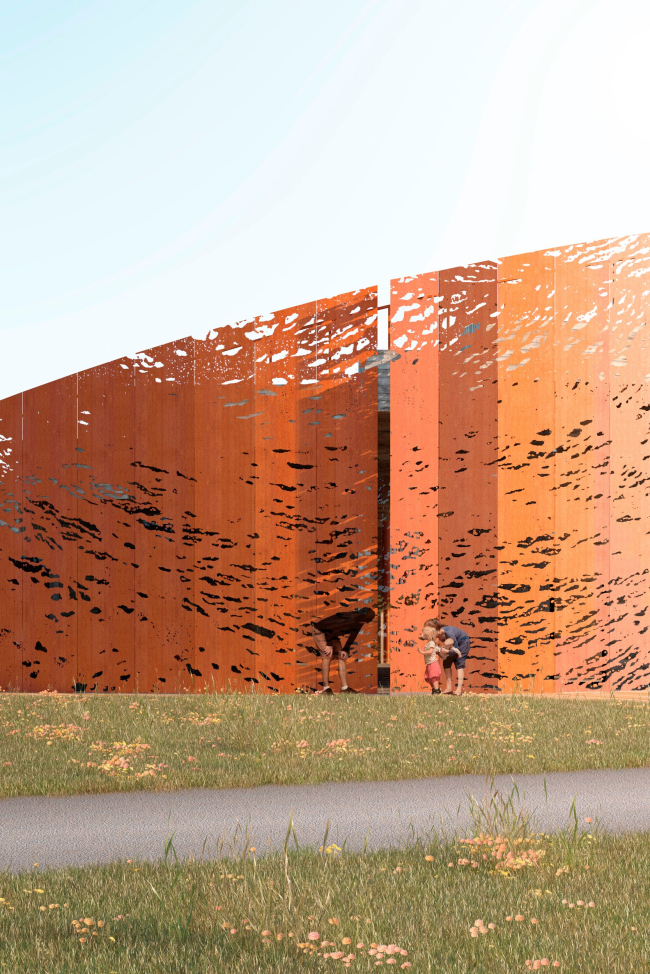
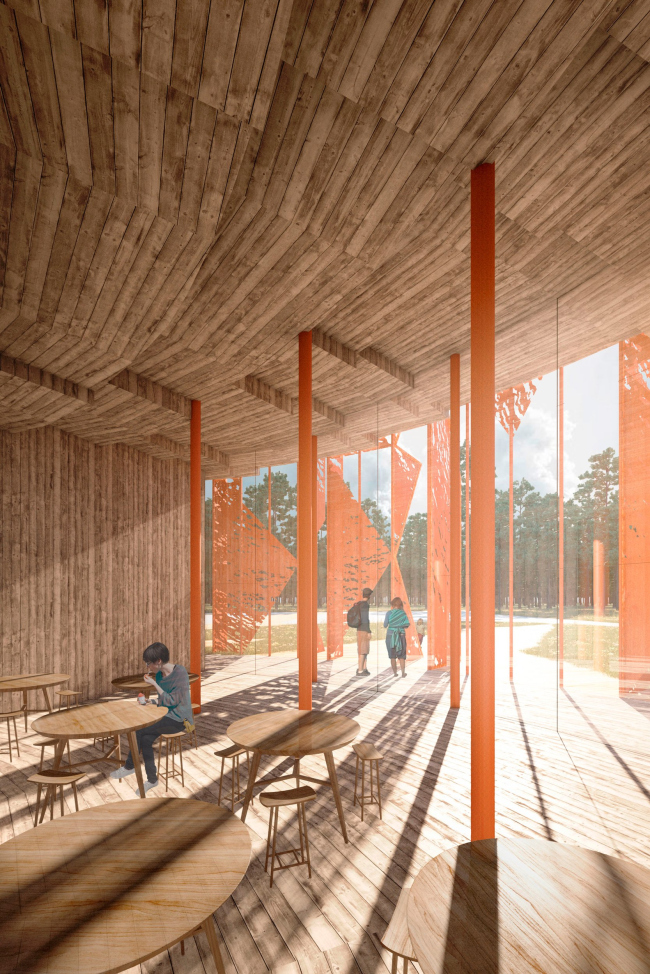

|
||||||||
Plaza de la Villa Library
The land site in the center of Madrid, proposed for the competition, upon which a library would be built, is located at the Plaza de la Villa, between the Royal Palace and Plaza Mayor. This place was constructed in the 16-17th centuries, when Spain was under the rule of the Habsburg Dynasty. The library was to become a new landmark and a “bridge” between the old and the new Madrid, and its halls with catalogs and exhibitions a part of the public space accessible to tourists and city people.
The main volume of the library is situated on the underground level; it surfaces in a wave-shaped roof that enshrouds the entire plaza, without obscuring the views of the historical construction and offering new ways to spend time. Access to the monument to Alvaro de Bazan, installed on the square, is preserved, and in addition, the admiral is returned to his native element – the statue becomes the center of a depression on the relief of the roof, which allows you to create a small pond around it. The roof “levitates” at the level of one meter above the square without touching it, which allows passers-by to see everything that is going on inside, at the same time providing natural lighting. Where the “canvas” of the roof rises higher, there are entrances to the library. The ground floor space is occupied by a newsroom, which can be adapted for various events, a book depository, administrative offices, and recreation rooms. The newsroom is connected to the entrance level by a staircase with an amphitheater, under which the technological premises of the cafe and toilets are located. There is an elevator for people with limited mobility. Light wood and stone in the decoration help to diffuse natural light. The project took third place in the competition. 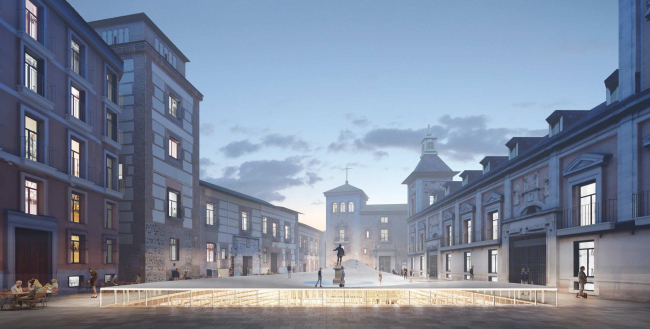
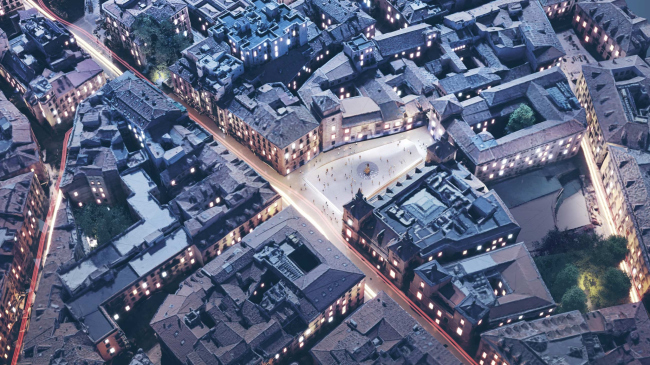
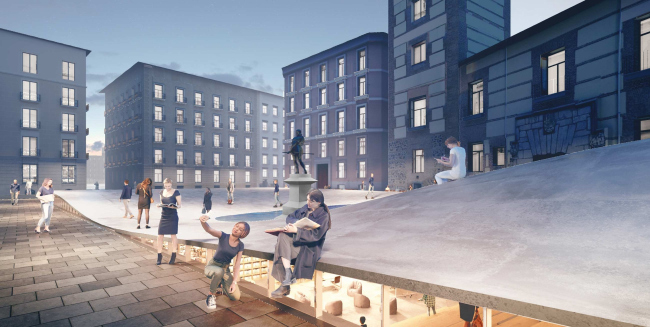
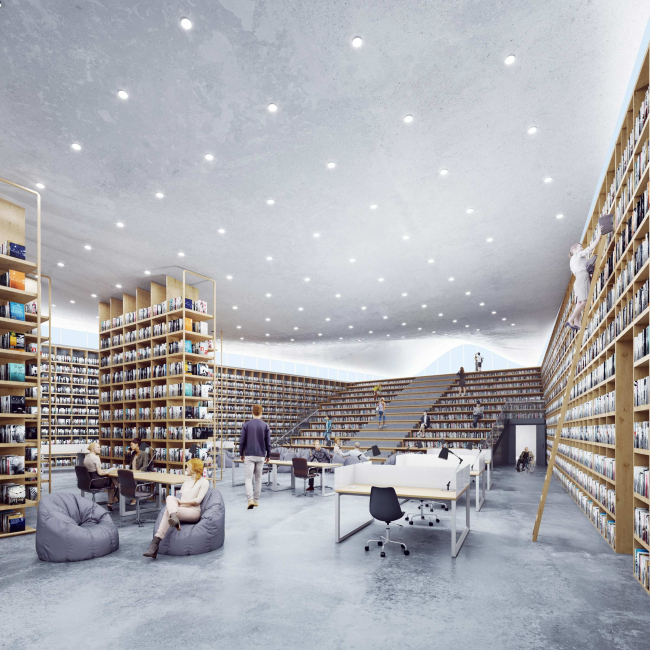

|
||||||||
The building of the “Opera by the Sea” in Tallinn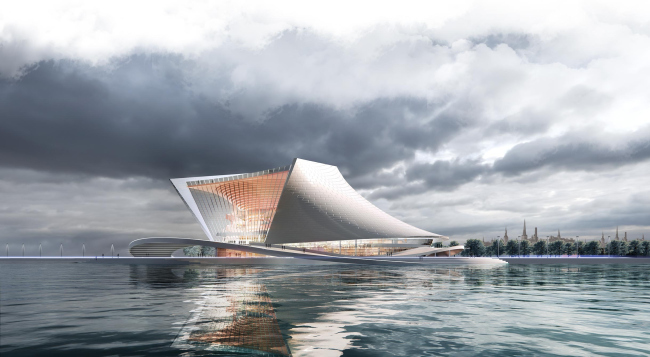
This competition was a paper one. The land site is located between the cruise port and the culture-and-sports complex Gorholl, which recently became famous all over the world, appearing in Christopher Nolan’s film “Argument” as the Kiev opera. The cape is a large underdeveloped territory overgrown with bushes – it is surprising that it hasn’t been yet turned into a park at least.
An Opera House is a typology that still allows for designing an iconic building. The ARENA architects proposed a sophisticated parametric shell that creates different images when viewed from different sides. When viewed from the shore the building looks like a giant tent, the shape of which echoes the silhouette of the fortress towers in the historical part of Tallinn. From the sea side, the “curtain” of the roof opens hospitably, and those arriving on ferries see a complex interior space formed by spiral staircases and the bowl of the amphitheater located on the middle level of the building. From the side of the port and the Gorholl, the opera looks like a sculpture consisting of undulating volumes and dynamic lines. Smooth bionic shapes contrast with the rigid mesh and brutalist volumes of the Gorholl. The entire first floor, where the shops, restaurants, and cafes are located, open on the inside with the help of stained glass windows, becoming the continuation of the landscaped embankment. An observation deck and an amphitheater with a stage are arranged on the operated roof. The theater includes a foyer, an auditorium, a stage box, a small hall, artistic and rehearsal rooms. The project received an honorable mention. The list of people’s sympathies is also interesting – you can see it on the page of the competition. 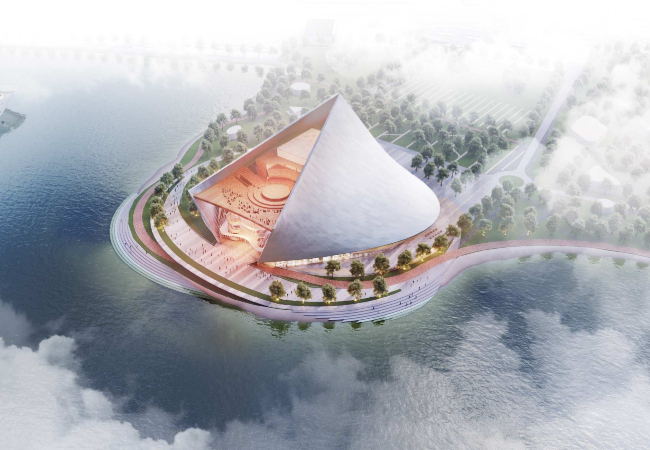
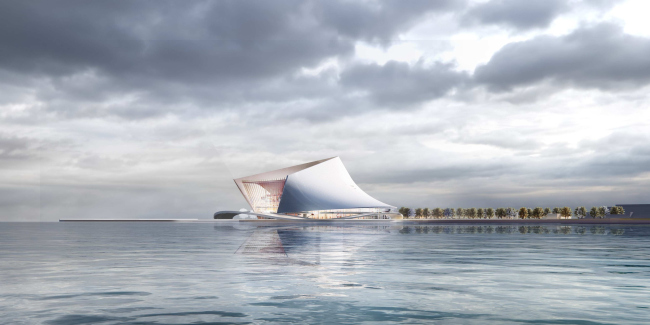



|
||||||||